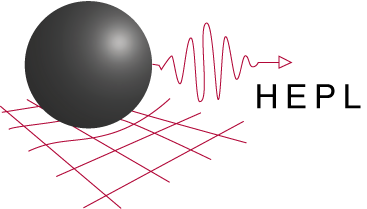News & Events
HEPL-KIPAC Experimental Seminars
Thursday, July 22, 2010
William C. Danchi
Program Scientist, Astrophysics Division
NASA Headquarters, Washington DC
Infrared Imaging and Characterization of Exoplanets:
Can we detect Earth-twins on a budget?
Abstract: During the past decade considerable progress has been made developing techniques that can be used to detect and characterize Earth twins in the mid-infrared (7-20 microns). The principal technique is called nulling interferometry, and it was invented by Bracewell in the late 1970's. The nulling technique is an interferometric equivalent of an optical coronagraph. At the present time most of the technological hurdles have been overcome for a space mission to be able to begin Phase A early in the next decade, and it is possible to detect and characterize Earth-twins on a mid- sized strategic mission budget ($600-800 million). I will review progress on this exciting method of planet detection in the context of recent work on the Exoplanet Community Forum and the US Decadal Survey (Astro2010), including biomarkers, technological progress, mission concepts, the theory of these instruments, and a comparison of the discovery space of this technique with others also under consideration.
Bio: William Danchi received a Bachelor of Physics with Honors from the California Institute of Technology in 1978 and a Ph.D. in Physics from Harvard University in 1983 under the direction of thesis advisor Professor Michael Tinkham. His post-doctoral research was with Professor Charlie Townes at the University of California at Berkeley , where he held the L.W. Frohlich Research Fellowship of the New York Academy of Sciences. He then rose through the ranks of the Research Faculty until he was Senior Space Fellow at the Space Sciences Laboratory. Subsequently, Dr. Danchi served as an Astrophysicist and then as Head of the Infrared Astrophysics Branch at NASA Goddard Space Flight Center. After, he was Senior Astrophysicist working in Exoplanet research, active on the US Terrestrial Planet Finder Interferometer and the European Darwin missions. During the past two years, he led a group planning for the Astro2010 Decadal Survey as part of the US Exoplanet Community Forum. He is currently active in two large projects with the Herschel Space Observatory, DUNES (Dust Around Nearby Stars), and GASPS (Gas Around Proplanetary Systems), as well as observations involving the Keck Interferometer, the Very Large Telescope Interferometer, and the Berkeley Infrared Spatial Interferometer. In May 2010, he began at NASA Headquarters as a Program Scientist responsible for Spitzer, WMAP, Herschel, Planck, and GP-B. Over the course of his career, Dr. Danchi has published over 250 papers in areas of superconducting devices, sub-millimeter and infrared astrophysics, stellar interferometry, and exoplanet detection.
Time: 4:00pm – 5:30pm
Location: Physics and Astrophysics Conference Room 102/103
Light refreshments available 4:00pm; Presentation begins 4:15pm.
Open to All


